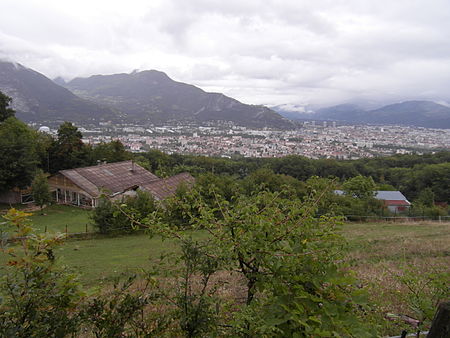Fontaine, Isère
Communes of IsèreIsère geography stubsPages including recorded pronunciationsPages with French IPAPages with disabled graphs

Fontaine (French pronunciation: [fɔ̃tɛn] ; Arpitan: Fontana) is a commune in the Isère department in southeastern France. Part of the Grenoble urban unit (agglomeration), it is the third-largest suburb of the city of Grenoble, and is adjacent to it on the west.
Excerpt from the Wikipedia article Fontaine, Isère (License: CC BY-SA 3.0, Authors, Images).Fontaine, Isère
Impasse de Chartreuse, Grenoble
Geographical coordinates (GPS) Address Nearby Places Show on map
Geographical coordinates (GPS)
| Latitude | Longitude |
|---|---|
| N 45.1939 ° | E 5.6856 ° |
Address
La Cerisaie
Impasse de Chartreuse 40
38600 Grenoble
Auvergne-Rhône-Alpes, France
Open on Google Maps






